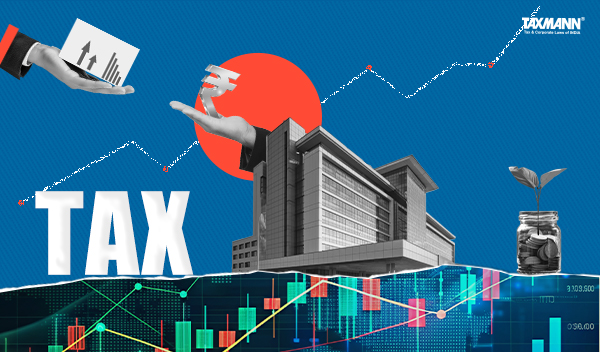[Opinion] Taxation of Income from Buyback of Shares | A Comprehensive Overview
- Blog|News|Income Tax|
- 2 Min Read
- By Taxmann
- |
- Last Updated on 2 August, 2024
CA Akrati Sogani – [2024] 165 taxmann.com 32 (Article)
A buyback, also known as a share repurchase, is a corporate action in which a company buys back its own shares from the existing shareholders, usually at a price higher than the market price.
This process reduces the number of outstanding shares in the market, which can increase the value of the remaining shares and improve financial ratios such as earnings per share.
1. Existing Provisions Under the Income-tax Act, 1961 (‘the Act’)
When a company buys back its own shares, it is subject to tax under Section 115QA of the Act at a flat rate of 20% (plus applicable surcharge and cess). This tax commonly known as buyback tax is levied on the ‘distributed income’ and is in addition to any other taxes that the company owes.
‘Distributed income’ is the difference between the amount payable on buyback and amount originally received on issue of shares.
Any resulting income on buyback of shares is exempt from tax, in the hands of shareholders under section 10(34A) of the Act.
2. Rational behind these amendments
The Hon’ble Finance Minister in her Budget Speech for 2024 has announced that the tax burden on buyback should be shifted to the shareholders, akin to dividends distribution. This would align the tax treatment of buyback with that of dividends. The intent of the legislature is as follows –
- Generally, a company that has a surplus have two options to return cash to its shareholders i.e. through declaration of dividend or through buyback of its own shares.
- Previously, companies paid Dividend Distribution Tax (‘DDT’) on declared dividends and the same were exempt in the hands of the shareholders. In contrast, shareholders were taxed on the amount received from buybacks, not the companies. Section 115QA (existing regime for buyback) was introduced to prevent companies from using buybacks to avoid DDT.
- However, as per Finance Act, 2020, dividend declared after 1 April 2020, was taxed in the hands of shareholders. As such, the company declaring dividend were not required to pay tax on such dividends.
Whereas income distributed on buyback was exempt in the hands of the shareholders and the tax on that was being paid and borne by the company. - By introducing the proposed amendments on buyback, it has made the tax treatment of buybacks in line with taxation on dividends and leading to no advantage of choosing buyback over dividends.
Click Here To Read The Full Article
Disclaimer: The content/information published on the website is only for general information of the user and shall not be construed as legal advice. While the Taxmann has exercised reasonable efforts to ensure the veracity of information/content published, Taxmann shall be under no liability in any manner whatsoever for incorrect information, if any.

Taxmann Publications has a dedicated in-house Research & Editorial Team. This team consists of a team of Chartered Accountants, Company Secretaries, and Lawyers. This team works under the guidance and supervision of editor-in-chief Mr Rakesh Bhargava.
The Research and Editorial Team is responsible for developing reliable and accurate content for the readers. The team follows the six-sigma approach to achieve the benchmark of zero error in its publications and research platforms. The team ensures that the following publication guidelines are thoroughly followed while developing the content:
- The statutory material is obtained only from the authorized and reliable sources
- All the latest developments in the judicial and legislative fields are covered
- Prepare the analytical write-ups on current, controversial, and important issues to help the readers to understand the concept and its implications
- Every content published by Taxmann is complete, accurate and lucid
- All evidence-based statements are supported with proper reference to Section, Circular No., Notification No. or citations
- The golden rules of grammar, style and consistency are thoroughly followed
- Font and size that’s easy to read and remain consistent across all imprint and digital publications are applied








 CA | CS | CMA
CA | CS | CMA


